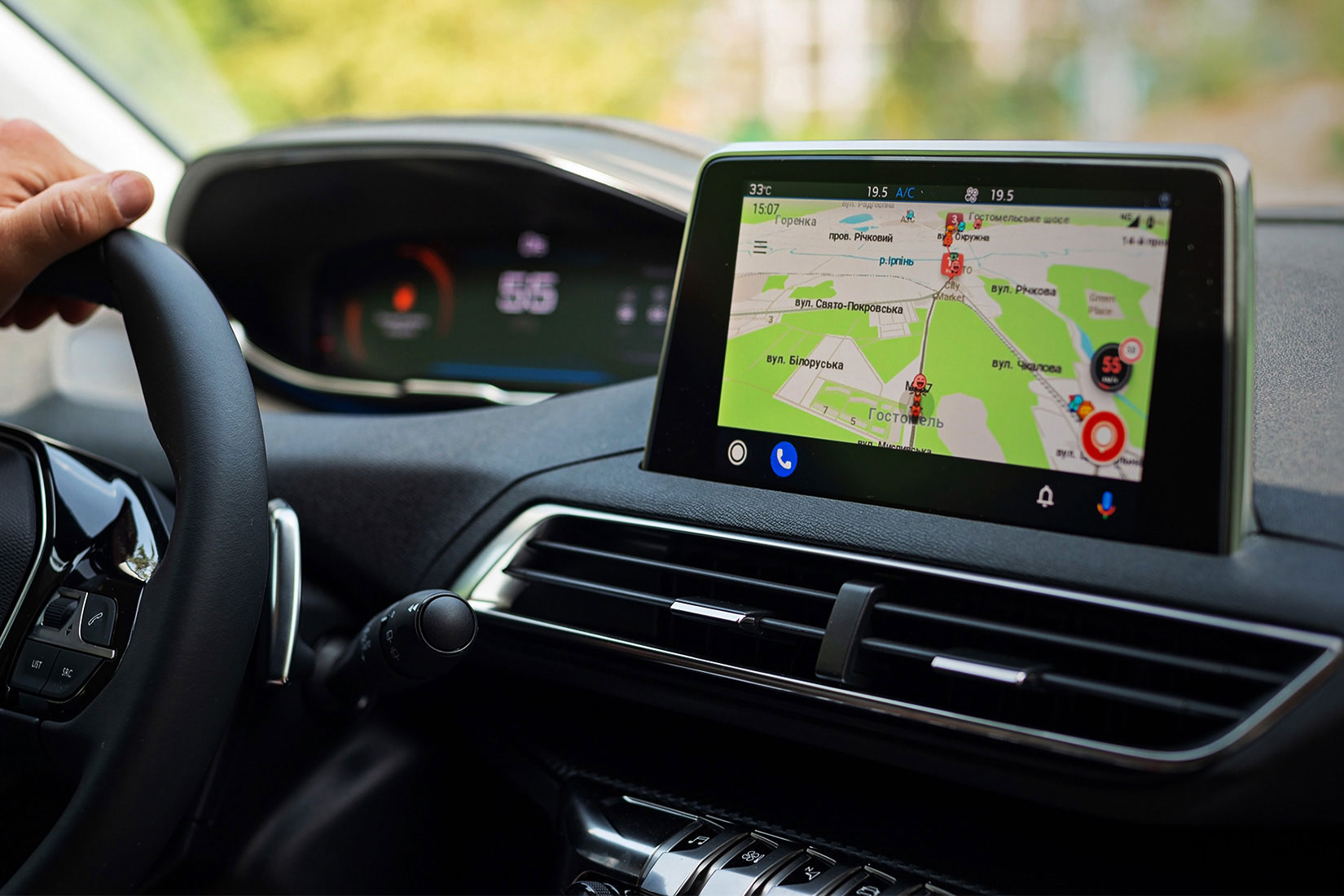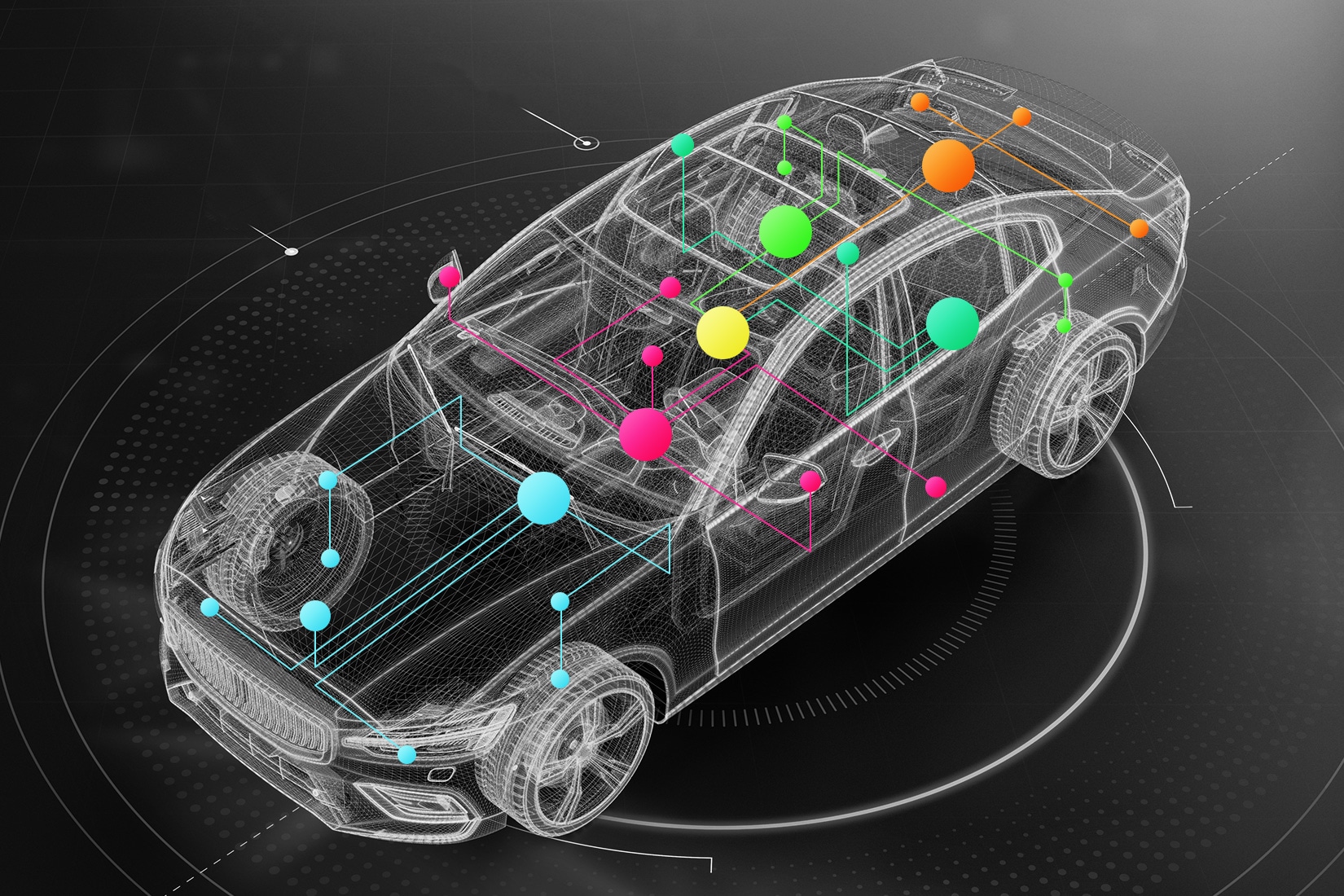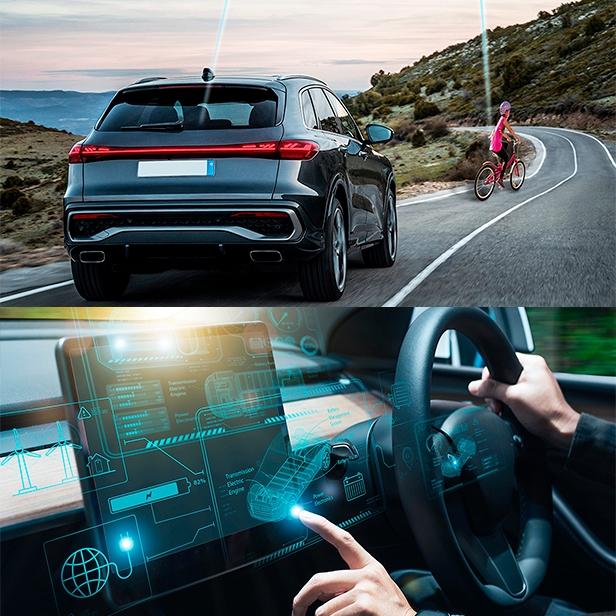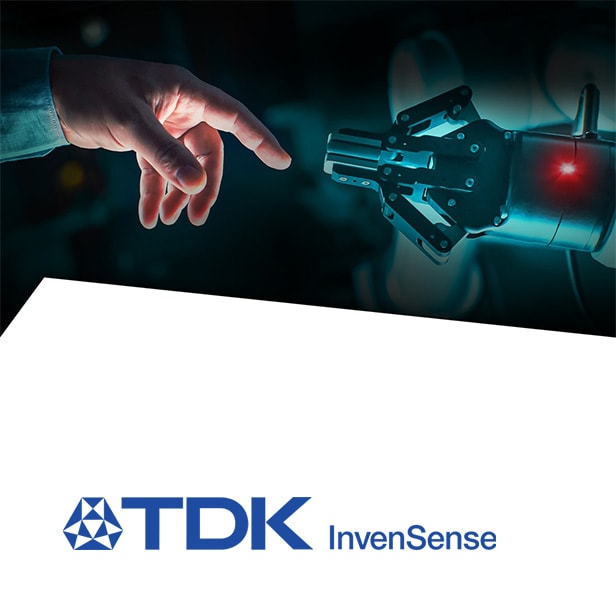
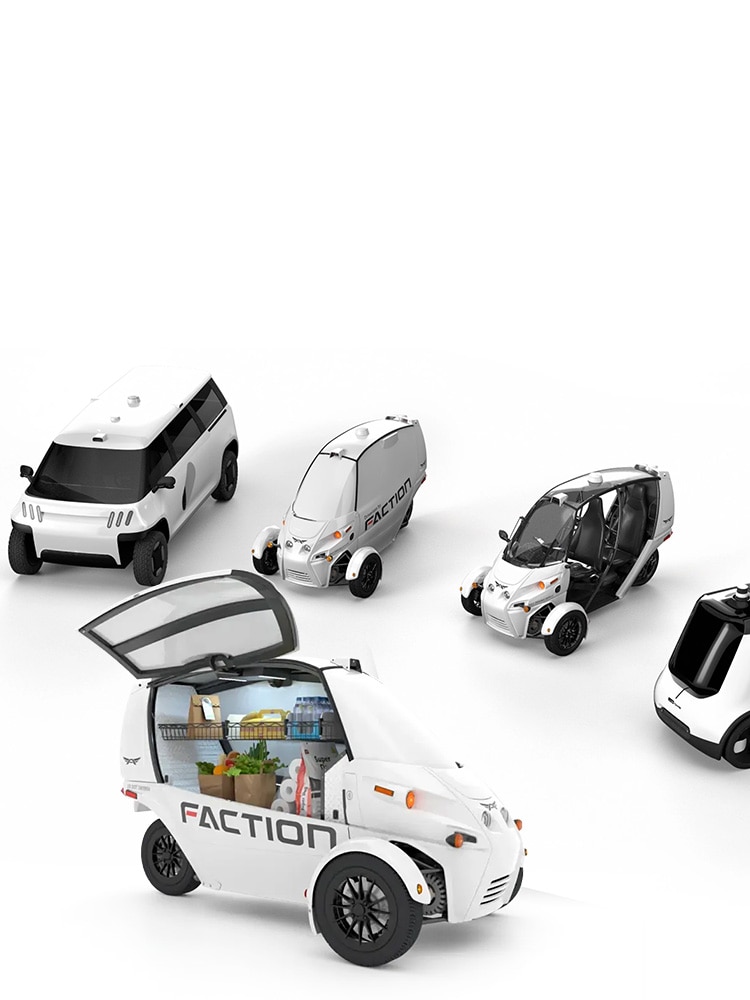
Accelerating the Journey to Semi-Autonomous Driving Through Innovative Collaboration
Although the idea of fully autonomous vehicles captures the imagination, the actualization of this technology is likely to take much longer than a handful of years.
Fully autonomous vehicles face significant practical challenges in 2024, primarily due to unresolved technical issues (e.g., Level 5*1 technology or complete automation), regulatory hurdles, and societal concerns. These vehicles must operate flawlessly in complex, unpredictable environments, a standard that current technologies struggle to meet consistently. Critical sensing capabilities, such as when vehicles are in tunnels or underground garages, have yet to be resolved.
On the upside, semi-autonomous vehicles, which still require human oversight but are equipped with advanced driver-assistance systems, present a more viable solution. They enhance driver safety and comfort by automating specific tasks like lane keeping and adaptive cruise control*2, while still relying on a human for critical decision-making.
This hybrid approach leverages the benefits of automation while mitigating the risks associated with fully autonomous operations.
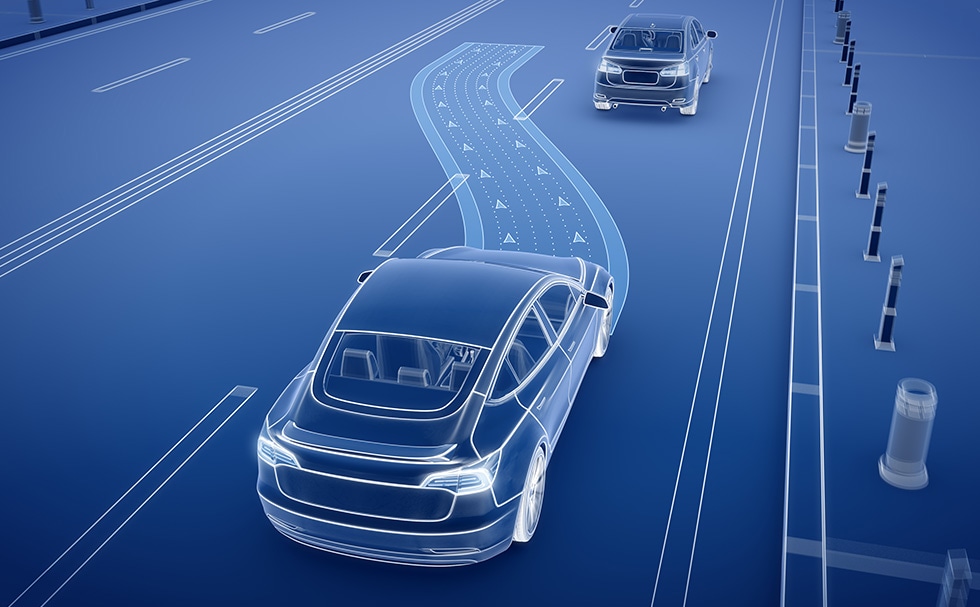
Advancing semi-autonomous vehicle technology with TDK sensor solutions
A critical element in developing semi-autonomous driving technology is the sensors that allow vehicles to interpret their surroundings. With semi-autonomous vehicles, it’s critical to focus on essential components that are dependable and provide insights into vehicle dynamics and enhancing performance.
This hybrid approach uses Level 2, partial automation, and Level 3, conditional automation, to increase the vehicle’s capability to handle tasks independently but with varying degrees of human oversight required. This strategy of ‘supervised autonomy’ marks a significant philosophical departure from the approach taken by traditional companies pursuing the Level-5 fully autonomous, AI-driven model.
The role of sensor fusion
Over the past decade, sensor fusion technology has evolved significantly, enabling data integration from diverse sensor types to enhance accuracy in robot navigation, movement, and task execution. This advancement is crucial, especially in urban settings where tall buildings and various obstructions compromise the reliability of GPS and GNSS*3 systems that provide accurate geolocation.
In such environments, the accuracy of these systems can diminish from inches to yards, which is insufficient for practical real-world use. This necessitates the use of inertial and perception sensors. Inertial sensors, cameras, radar, and LIDAR*4 are pivotal for relative positioning, offering more reliable navigation solutions in areas where GPS or GNSS signals are obstructed.
But how do you bring together the brainpower, resources, and raw materials to make this happen?
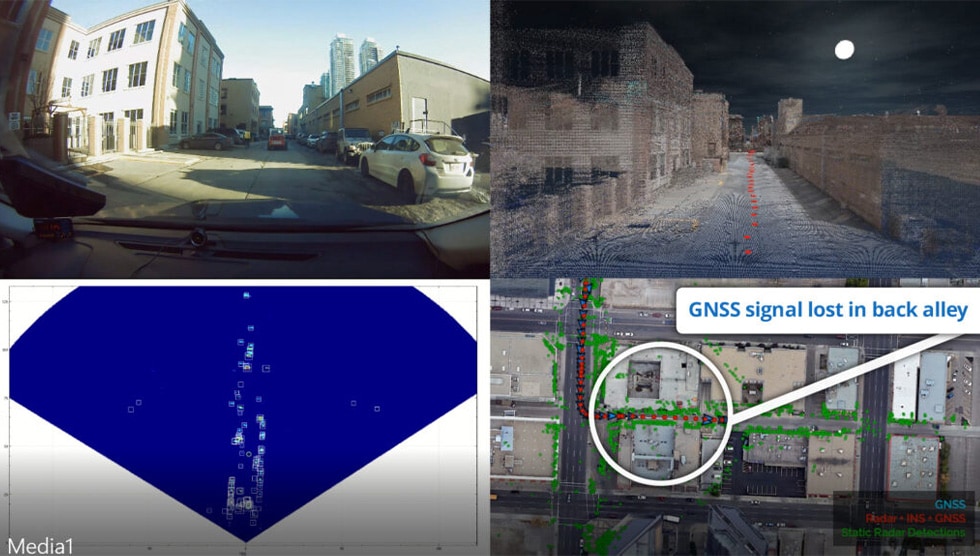
TDK Ventures Portfolio Companies + TDK Technologies = Integrated Solutions
Immersed in the TDK Goodness approach, which aligns with TDK’s dedication to contributing positively to society and the environment, TDK Ventures, the corporate venture capital arm of TDK Corporation, plays a significant role in fostering innovation and growth in the startup ecosystem, particularly for technology-driven companies and disruptors.
With a strong focus on energy and environmental sustainability, TDK Ventures invests in and supports early-stage startups that are poised to make a substantial impact in their respective industries.
By leveraging TDK’s vast resources, technical expertise, and global network, TDK Ventures provides financial investment and strategic guidance, access to innovative research and development, and opportunities for collaboration and scale-up, accelerating the growth and success of its portfolio companies.

What drives portfolio company synergy
So, why do these partnerships make sense overall?
TDK and its partner portfolio companies, in this case, Faction, can assist one another by assuming the types of risks they are each best equipped to handle and by managing the risks that align with their respective strengths. For example, startups are better positioned to absorb market risks, and as a long-standing corporate entity, TDK must prioritize maintaining its quality and serving its existing customer base, upholding its long-standing reputation for excellence.
“TDK Ventures has been able to facilitate conversations for Faction with the parent TDK divisions who build components that allow us to move faster. While we are technically a software company at our core, leveraging some of the TDK technologies allows us to bring our technology to vehicle partners much faster by using some of the things that exist in the TDK portfolio globally.”
Ain McKendrick | Faction Founder & CEO

Faction Founder & CEO
Venturing into new market segments would entail substantial risks for TDK, given its established business focus, whereas startups like Faction are willing to take those risks to integrate its technology into applications, see the results, and deliver disruptive new products. In addition, from a technology viewpoint, TDK can reduce mobility startups’ risks by supporting them with components and advanced circuitry that create better positioning, orientation, velocity measurements, and more.
Why Faction is a good match with TDK’s overall vision
As a whole, TDK is committed to addressing societal issues with a long-term perspective, focusing on global environmental preservation, promoting human rights, and creating a sustainable and happy society for all. Through its unique core technologies and solutions, the company strives to fulfill its long-term vision: “TDK Transformation. Accelerating transformation for a sustainable future”.
Within that context, TDK Ventures works with startups in the autonomous and semi-autonomous vehicle and industrial robotics fields, as well as other verticals where positioning and navigation are critical.
Working with TDK Ventures’ partners, Trusted Positioning and InvenSense, both groups under the TDK Corporation umbrella, Faction was a natural fit where TDK could bring resources to bear at a fraction of the cost and time that would be required for the startup to build on its own.
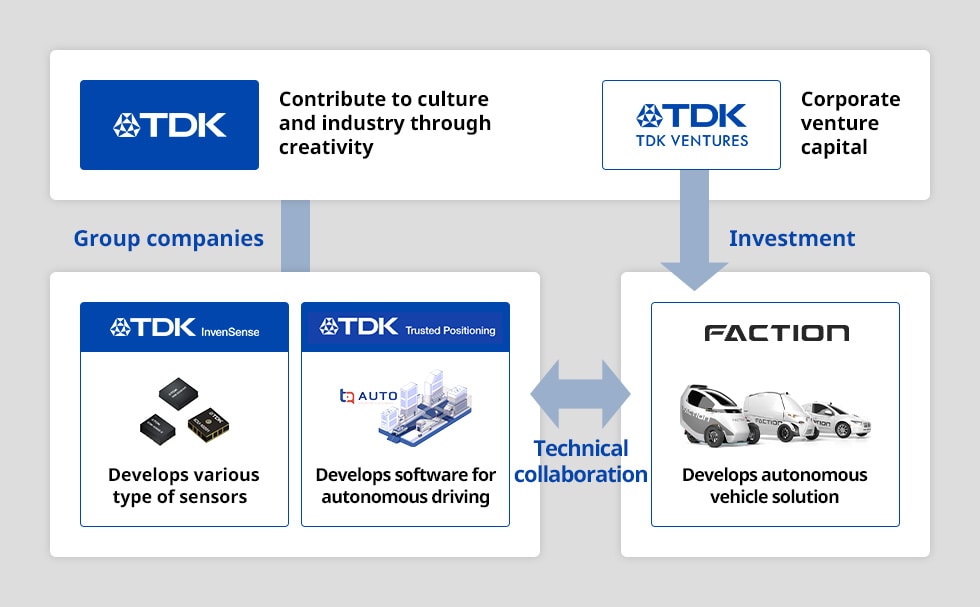
From Faction’s perspective, it was not created to test theories but to solve real-world problems and bring those solutions to market. To do that, Faction needed access to high-grade, reliable components at scale, which TDK could provide. Faction is advancing Level-2 and Level-3 drive-by-wire*5 technologies within the micromobility and last-mile logistics delivery sectors. TDK’s business divisions are supporting Faction in scaling up, commercializing, and accelerating the market launch of its products.
Faction partners with Trusted Positioning and InvenSense
Trusted Positioning and InvenSense’s sensor technologies are set to play a pivotal role in enhancing Faction’s semi-autonomous vehicle capabilities.
Trusted Positioning offers advanced navigation solutions that can augment GPS data, ensuring accurate and reliable positioning even in challenging environments where GPS signals are weak or obstructed. This is crucial for maintaining the precision required for semi-autonomous driving.
InvenSense’s sensor technology, known for incorporating high-performance gyroscopes, accelerometers, and other motion-tracking components, complements this by providing the essential data for vehicle stability and orientation. Together, these technologies enable Faction’s vehicles to navigate and operate safely and efficiently in a variety of settings, making them more adaptable and dependable.
The future of Faction and TDK’s partnership
Over time, as Faction and TDK align more closely within the semi-autonomous vehicle industry, they are moving towards adopting a Software-as-a-Service (SaaS)*6 model instead of the traditional per-unit navigation device approach. Faction’s strategy involves advancing semi-autonomous vehicle technology alongside OEM partners and offering teleoperation services. The long-term goal is to supply platforms that enable their clients to expand and venture into new applications leveraging autonomous technology.
In summary
TDK Ventures is making a direct impact throughout the technology-related venture capital landscape through its commitment to nurturing innovations that align with societal needs and sustainable development goals. By prioritizing startups that develop solutions to pressing global challenges, such as renewable energy, energy storage, and digital transformation technologies, TDK Ventures contributes to the creation of a more sustainable and healthier future for everyone.
Follow our developments as TDK Ventures continues to grow its partnerships with Faction and other trusted portfolio companies, bringing new and innovative ideas to the marketplace.
Terminology
- *1 Level 5: The highest classification level in automated driving technology, denoting fully autonomous driving. The vehicle performs all driving tasks safely under all conditions without requiring any human intervention.
- *2 Adaptive Cruise Control: A driver assistance system that automatically adjusts a vehicle’s speed to maintain a constant distance with the vehicle ahead.
- *3 GNSS: Global Navigation Satellite System. The generic term for a geospatial positioning system providing global coverage based on signals from a constellation of satellites. GPS is one example of a GNSS, operated by the United States.
- *4 LiDAR: Acronym of Light Detection And Ranging. A technology that measures the distance and shape of an object by targeting it with laser light.
- *5 Drive-by-wire: A technology where conventional mechanical and hydraulic control systems are replaced with electronic controls.
- *6 SaaS: Acronym of Software as a Service. A delivery model of software where it is provided as a service over the Internet.





